[Software] C.4 Recommended Process Model
Categories: Software
Tags: Process Model
📋 This is my note-taking from what I learned in the class “Software Engineering Fundamentals - COMP 120-002”
Adapting Process Models
- Every software project needs a “road map” or “generic software process” of some kind.
- Every project is different, and every team is different.
- No single software engineering framework is appropriate for every software product.
- Any road map or generic process should be based on best industry practices.
- Developers and stakeholders adapt generic process models and tailor them to fit the current project, the skills of the team members, and the user needs.
Principles for Organizing Software Projects
- It is risky to use a linear process model without ample feedback.
- It is never possible nor desirable to plan big up-front requirements gathering.
- Up-front requirements gathering may not reduce costs or prevent time slippage.
- Appropriate project management is integral to software development.
- Documents should evolve with the software and should not delay the start of construction.
- Involve stakeholders early and frequently in the development process.
- Testers need to become involved in the process prior to software construction.
Incremental Model for Prototype Design
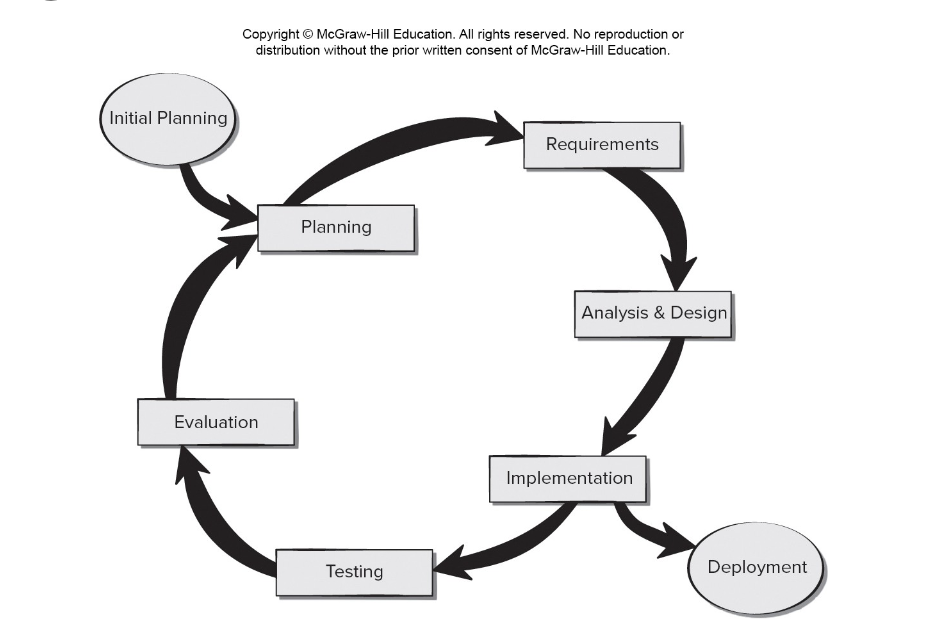
Characteristics of Agile Process Models
- Not suitable for large high-risk or mission critical projects.
- Minimal rules and minimal documentation.
- Continuous involvement of testers.
- Easy to accommodate product changes.
- Depends heavily on stakeholder interaction.
- Easy to manage.
- Early delivery of partial solutions.
- Informal risk management.
- Built-in continuous process improvement.
Characteristics of Spiral Process Models
- Not suitable for small, low-risk projects.
- Several steps required, along with documentation done up front.
- Early involvement of testers (might be done by outside team).
- Hard to accommodate product changes until prototype completed.
- Continuous stakeholder involvement in planning and risk assessment.
- Requires formal project management and coordination.
- Project end not always obvious.
- Good risk management.
- Process improvement handled at end of project.
Spiral Model for Prototype Design
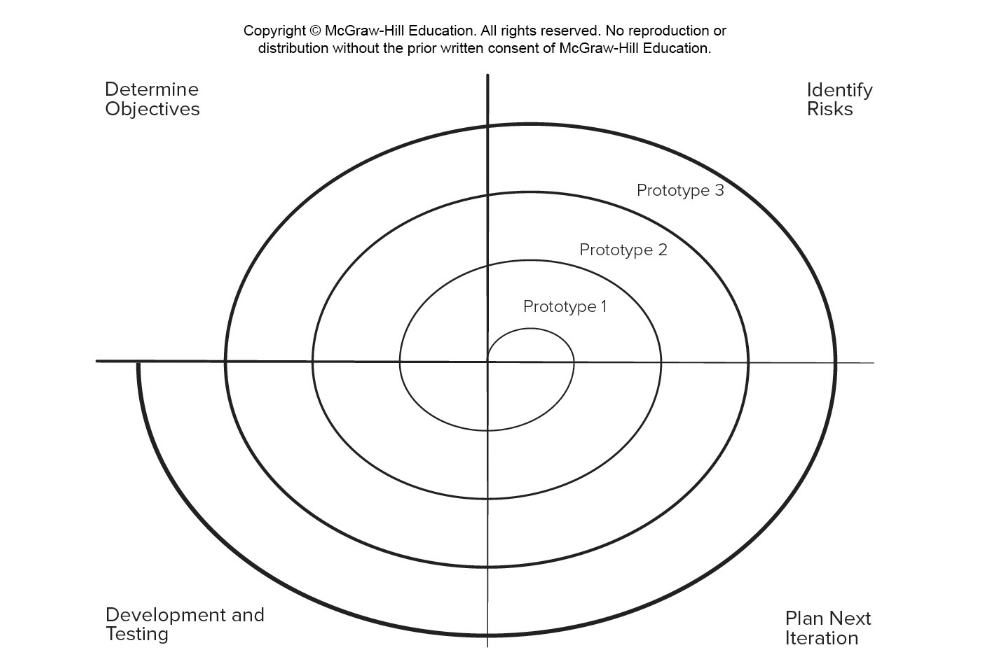
Agile Requirements Definition
- Encourage active stakeholder participation by matching their availability and valuing their input.
- Use simple models (for example, Post-it notes, fast sketches, user stories) to reduce barriers to participation.
- Take time to explain your requirement representation techniques before using them.
- Adopt stakeholder terminology and avoid technical jargon whenever possible.
- Use a breadth-first approach to get the big picture of the project done before getting bogged down in details.
- Developer and stakeholders refine requirements “just in time” as user stories are ready to be implemented.
- Treat list of features like a prioritized list and implement the most important user stories first.
- Collaborate closely with stakeholders and document requirements so they are useful to all when creating the next prototype.
- Question the need to maintain models and documents not referred to in the future.
- Ensure management support for stakeholder and resource availability during requirements definition.
Protype Architectural Design
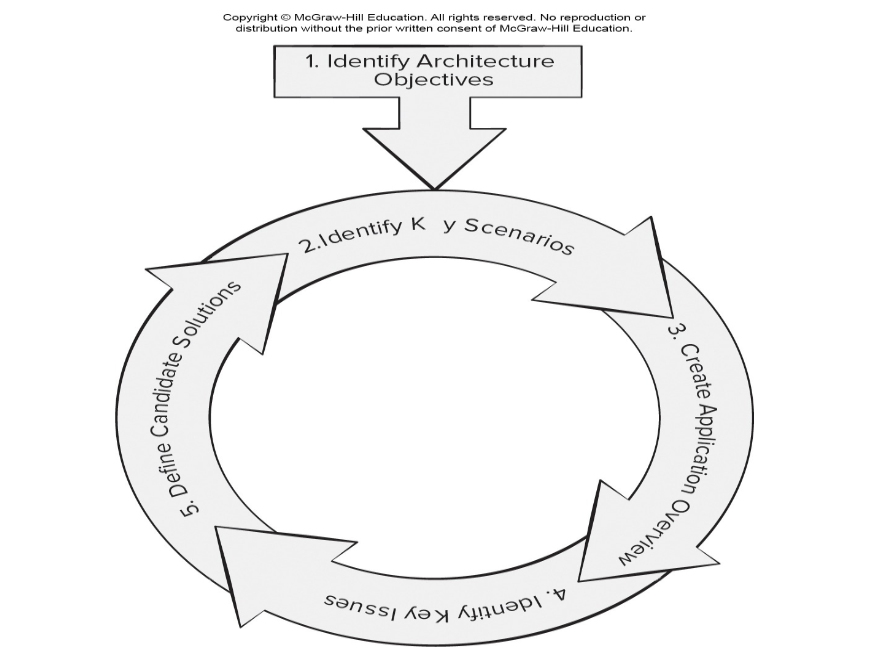
Elements of Agile Architectural Design
- Focus on key quality attributes and incorporate them into prototypes as they are constructed.
- Keep in mind that successful software products combine customer-visible features and the infrastructure needed to enable them.
- Agile architectures enable code maintainability and evolvability if attention is paid to architectural decisions and quality issues.
- Managing and synchronizing dependencies among functional and architectural requirements is needed to ensure evolving architecture will be ready for future increments.
Resource Estimation for Agile Spiral Model
- Team should use historic data to develop an estimate of number of days needed to complete each of user stories known at the start of the project.
- Loosely organize the user stories into sets that will make up each sprint planned to complete a prototype.
- Sum the number of days to complete each sprint to provide an estimate for the duration of the total project.
- Revise the estimate as requirements are added to the project or prototypes are delivered and accepted by the stakeholders.
First Prototype Guidelines
- Transition from paper prototype to software design.
- Prototype a user interface.
- Create a virtual prototype.
- Add input and output to your prototype.
- Engineer your algorithms.
- Test your prototype.
- Prototype with deployment in mind.
Prototype Evaluation
- Provide scaffolding when asking for prototype feedback.
- Test your prototype on the right people.
- Ask the right questions.
- Be neutral when presenting alternatives to users.
- Adapt while testing.
- Allow the user to contribute ideas.
Go No Go Decision
- A pass through the planning region follows the evaluation process.
- Revised cost estimates and schedule changes are proposed based on changes were requested when evaluating the current prototype.
- Risk of exceeding the budget and missing the project delivery date is assessed.
- Risk of failing to satisfy user expectations is also considered and discussed with the stakeholders and sometimes senior management.
- Goal of risk assessment is to get commitment from stakeholders and management to provide the resources needed to create the next prototype.
Recommended Prototype Evolutionary Process
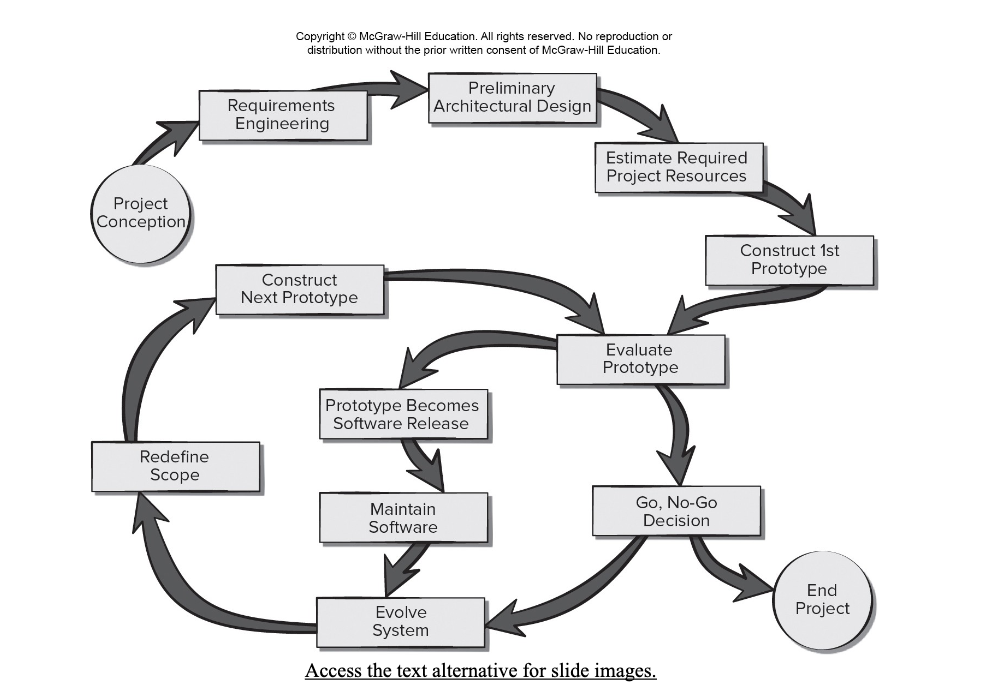
Recommended Process Steps
-
Requirements engineering.
- Gather user stories from all stakeholders.
- Have stakeholders describe acceptance criteria user stories.
-
Preliminary architectural design.
- Make use of paper prototypes and models.
- Assess alternatives using nonfunctional requirements.
- Document architecture design decisions.
-
Estimate required project resources.
- Use historic data to estimate time to complete each user story.
- Organize the user stories into sprints.
- Determine the number of sprints needed to complete the product.
- Revise the time estimates as use stories are added or deleted.
-
Construct first prototype.
- Select subset of user stories most important to stakeholders.
- Create paper prototype as part of the design process.
- Design a user interface prototype with inputs and outputs.
- Engineer the algorithms needed for first prototypes.
- Prototype with deployment in mind.
-
Evaluate prototype.
- Create test cases while prototype is being designed.
- Test prototype using appropriate users.
- Capture stakeholder feedback for use in revision process.
-
Go, No-Go decision.
- Determine the quality of the current prototype.
- Revise time and cost estimates for completing development.
- Determine the risk of failing to meet stakeholder expectations.
- Get commitment to continue development.
-
Evolve system.
- Define new prototype scope.
- Construct new prototype.
- Evaluate new prototype and include regression testing.
- Assess risks associated with continuing evolution.
-
Release prototype.
- Perform acceptance testing.
- Document defects identified.
- Share quality risks with management.
-
Maintain software.
- Understand code before making changes.
- Test software after making changes.
- Document changes.
- Communicate known defects and risks to all stakeholders.
Testing New Prototypes
- Testing should be performed by developers using test cases created during the design process before programming was completed.
- Each user story has an acceptance criteria attached to it and it should guide the creation of the test cases to ensure the prototype meets customer needs.
- Prototypes need to be tested for defects and performance issues.
- Ensure that adding new features to evolutionary prototypes does not accidentally break features working correctly in the previous prototype (regression testing).
Release Candidates
- A prototype considered as a release candidate is subjected to user acceptance testing in addition to testing conducted during prototype construction.
- User acceptance tests are based on acceptance criteria that were recorded as each user story was created and added to the product backlog.
- User feedback during acceptance testing should be organized by user-visible functions as portrayed via the user interface.
- Developers should make changes only if these changes will not delay the release of the prototype.
- If changes are made, they need to be verified in a second round of acceptance testing before moving on.
- The issues and lessons learned from creating the release candidate should be documented and considered by the developers and stakeholders as part of the project postmortem.
- This information should be considered before deciding to undertake future development of a software product.
- Lessons learned from the current product can help developers make better cost and time estimates for similar projects in the future.
Software Release Maintenance
- Maintenance - activities needed to keep software operational after it has been accepted and released in the end-user environment.
- Corrective maintenance - reactive modification of software to repair problems discovered after the software has been delivered.
- Adaptive maintenance - reactive modification of software after delivery to keep the software usable in a changing environment.
- Perfective maintenance - proactive modification of the software after delivery to provide new user features, better program code structure, or improved documentation.
- Preventive maintenance – proactive modification software after delivery to correct product faults before discovery by users.
- In agile process models much (but not all) of the maintenance work is preventive or perfective as new features are added.
Maintenance Effort Distribution
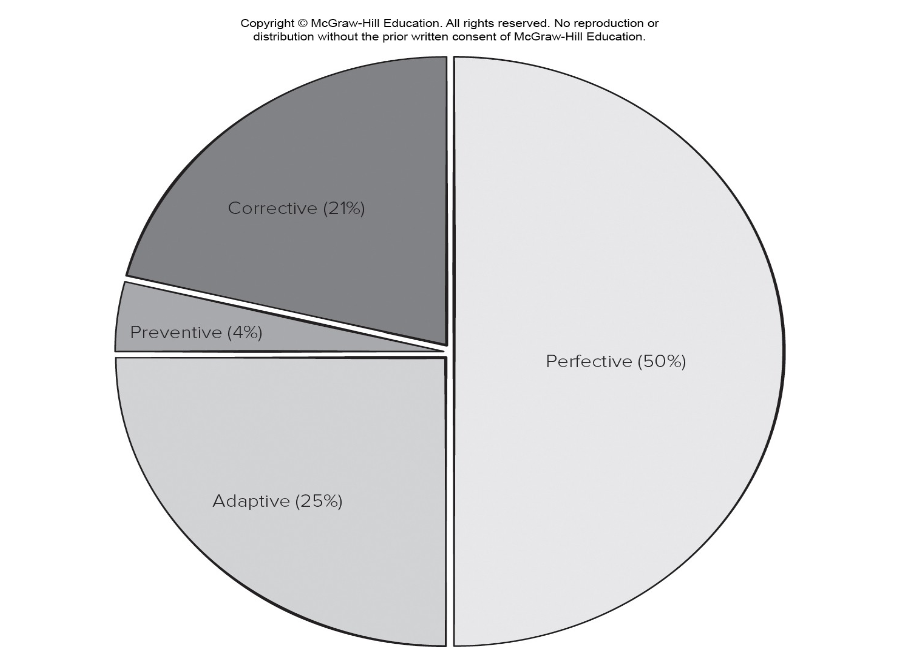

Leave a comment